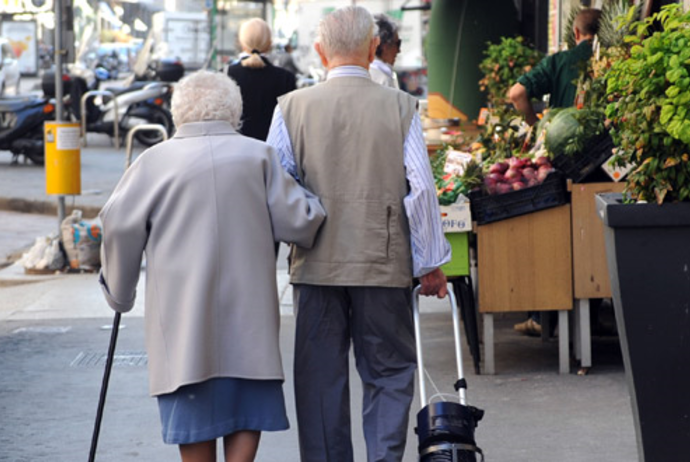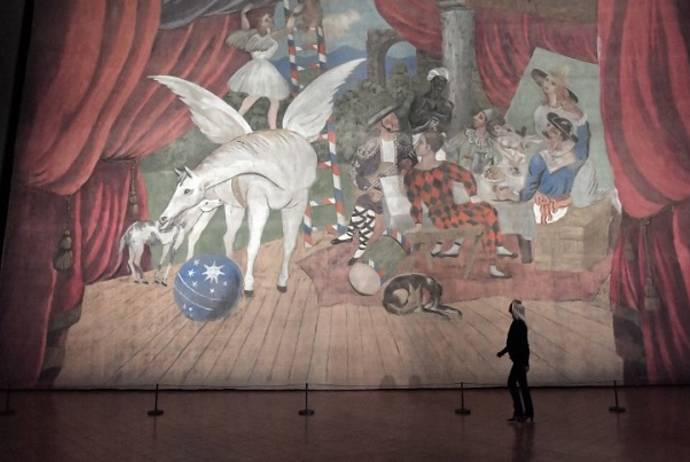ROME -- In an era characterized by world figures of minor dimensions, former Italian President Giorgio Napolitano looms large. Born in Naples back in 1925, at ninety-two this life-time Senator and twice President of Italy is vital and surprisingly sturdy both intellectually and physically. Last week journalist Mario Calabresi found Napolitano surrounded by newspapers, magazines and books in his office in Palazzo Giustiniani, across the street from the Senate a stone's throw from Piazza Navona.
"Italy," said Napolitano in the interview published by La Repubblica, "faces serious phenomena, complex and without precedent." Urging reduction of the public debt and "interventions" on public spending, Napolitano had warm praise for the work of Mario Draghi, head of the European Central Bank since 2011. "We cannot simply wait for economic growth reduce our public debt gradually," he said, echoing Draghi. "We must put our fiscal house in order and build further guarantees for the future."
His generous praise for Draghi's views on fiscal probity and public debt were in contrast to recent harsh criticism for the central banker from former Premier Matteo Renzi, the head of the Partito Democratico (PD). "This just may signal the kiss of death for Mario Draghi," commented the rightist "Libero." The daily, which dubbed the interview "catatonic," attacked Napolitano for openly criticizing the Movimento Cinque Stelle (M5S) and the (formerly) Northern League headed by Matteo Salvini. "Libero" also assailed Napolitano's criticism of "populist and reactionary" movements that sow the seeds of prejudice and "demonize reasonable political compromise."
Senator Napolitano's primary focus was Germany, however. Mentioning the "profound crises" in East Europe, and especially Poland and Hungary, he said that Angela Merkel has never before had to face such difficulties within her own party. Nevertheless, "Without a positive solution for the German crisis, Europe has few prospects," said Napolitano. "Still, to find a substitute for her strikes me as rather hypothetical just now. I don't see who else can untie the knots that keep the Germans from forming a [governing] majority."
The background of the man who served as president of Italy not once but twice is literally extraordinary. Napolitano holds honorary degrees from the Sorbonne, Oxford, the Hebrew University at Jerusalem and the Complutense University of Madrid as well as from numerous Italian universities. In 2006 Napolitano was elected Italian President with 543 votes and, in 2013, re-elected, this time with 738 votes.
When no candidate was accepted by the Chamber and Senate, to break the stalemate he was asked to serve a second term and accepted with the proviso that, at the appropriate time, he would resign. From the crusty right came criticism that he would stay on for a total of 16 years but in fact he resigned in January of 2015, paving the way for the election of today's president, Sergio Mattarella, the brother of Piersanti Mattarella, Sicilian politician murdered by Mafia Cosa Nostra in 1980.
A 20-year-old law student in Naples during World War, Napolitano sided with the partisans against the Nazi German occupation. At the end of the war he joined the Italian Communist party (PCI), which elected him to the Chamber of Deputies in 1953. Among his several books is "Interview with the PCI" written in 1975 with the leftist British writer Eric Hobsbawm, and translated into 10 languages.
Napolitano remained a party member, always representing his home town, Naples, until the PCI was dissolved in early 1991. Throughout his long political career Napolitano was an unusual party member, however, distinguished for being ever open to dialogue, including with those assumed to be adversaries, and I had the pleasure of meeting him at an official US event in 1975. Napolitano was a member of the Italian delegation to the NATO Assembly (1984 - 92 and 1994 - 96), which dealt with the Atlantic community relations, from Mediterranean security to questions of human rights.
In 1978, Napolitano traveled to the US to lecture at Johns Hopkins, Georgetown and Princeton Universities and at foreign affairs institutes in Washington, DC, becoming the first Italian Communist to be invited in this way, rather than as the member of a political delegation. Returning from the U.S. he published an article in the Communist monthly "Rinascita" describing his American sojourn. "From my first day there in New York I have been focussing on the press, much better than I'd imagined," he begins. At a meeting at "Newsweek" magazine editors, "We spoke of the problems of the phenomenon of terrorism, its causes, its international dimension and relevance and virulence in Italy."
After speaking with reporters from the "New York Times," "Washington Post" and other US media, Napolitano commented that, "I am always struck by the sense of the essential and concrete in these informal, off-the-record discussions... The questions are sharp, they go right to the point."He praised the US for not simplifying Italian terrorism, but for trying to understand "its degeneration from Marxism and the Communist movement into ideological delirium and the most barbarian crimes."







































